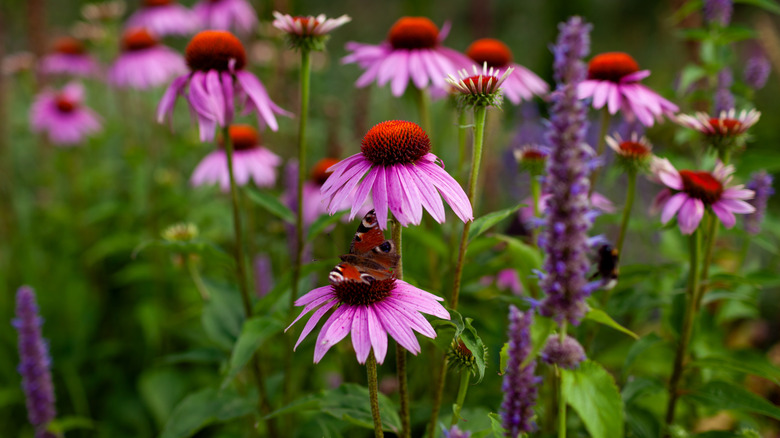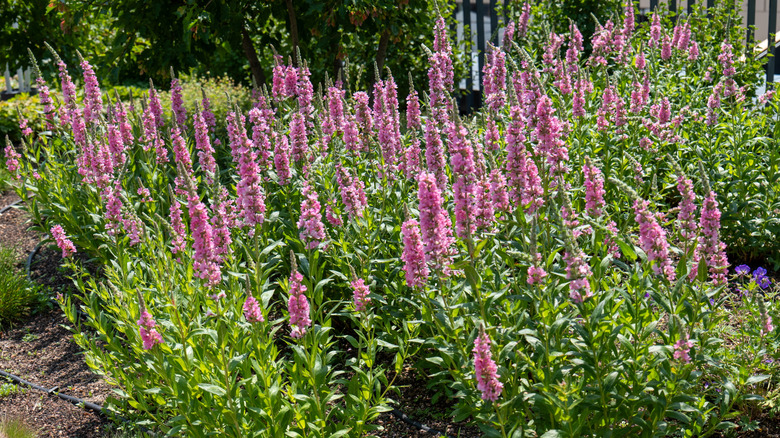Grow These Affordable Perennials For A Colorful Garden Year-Round (Without Extra Work)
Gardening shouldn't feel like an impossible chore. If it's begun to seem like all you do is spend your time fighting weeds and trying to remember what plants to deadhead, it's time to meet your new best friends: short-lived perennials. These plants are like a weird little hybrid between annuals and shrubs. They typically live for three to five years (which is longer than annuals but not nearly as long as traditional perennials) and the best part is many of them self-seed to return and give you a few years of bloom, without you having to put in any work.
Echinacea, for example, is a great choice for this. It is low maintenance and very popular with pollinators — and we always need more pollinators in our yards. Plus it just looks good. Penstemon is another one; it produces spires of tubular flowers that attract bees and hummingbirds, and lupines are just as beautiful plus they fix nitrogen in the soil, which means they're helping in your garden without asking for anything in return. Hyacinth are early bloomers; they'll happily pop up through late frost with no drama, which is always a nice surprise early in the season.
And what makes all of these plants so special is that they aren't just pretty — they're totally self-sufficient in addition to being affordable and good neighbors to the other plants around. They can be grown in containers, garden beds, or simply mixed in with shrubs and other ornamental grasses. Their shorter lifespan means you can experiment with the layout and combinations without having to commit to anything for decades to come. So why not plant a few this year? By next summer you might have a whole new garden, designed by nature, without having to lift a finger.
How to grow these short-lived perennials
Growing these perennials is relatively easy. They have a knack of making your garden look like you've done more work than you have because they are self-seeding flowers. This means they drop seeds in the fall, which will root into the ground before sprouting the following spring all on their own — with no tending, germinating, or repotting involved from you. It is a good idea, however, to give them a first season of attention where you water them often, and take care of their immediate vicinity. But after that, simply let them do their thing.
Many of these plants will be available for even less money toward the end of the growing season, when nurseries clear out their stock. So even if they look a bit tired and have finished blooming, you can still try planting them late in the season. Come next spring, they will often return healthier than before.
Once you trust the process, you can let the flowers go to seed intentionally, which might look a little scruffy for a few weeks, but those seeds can drift around your garden and pop up in the most unexpected places, like free surprise landscaping. You should not underestimate the charm of a flower that grows somewhere you didn't plan it; it's like nature left to its own devices and that's how gardening should feel — like a charming surprise.

